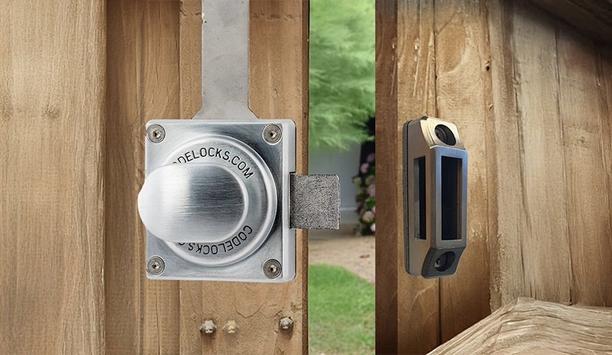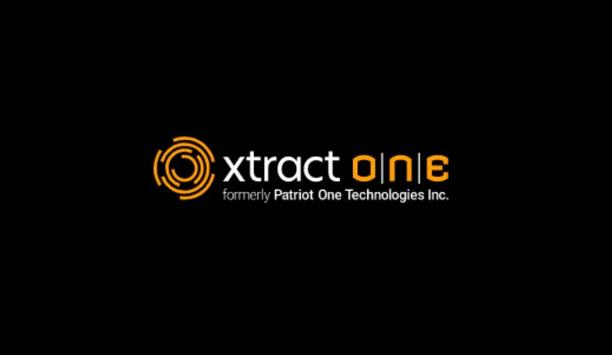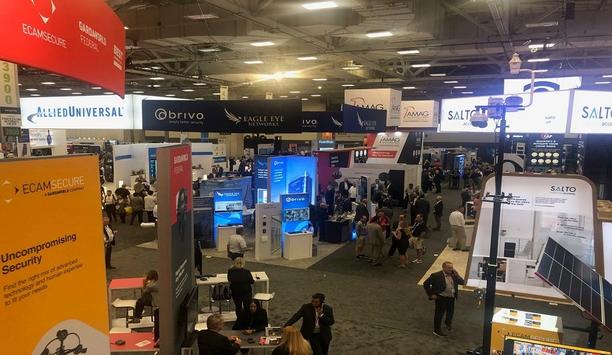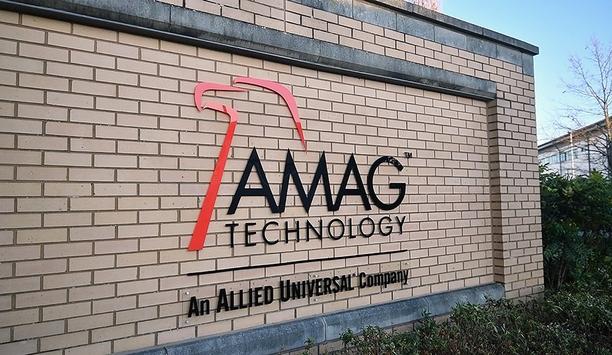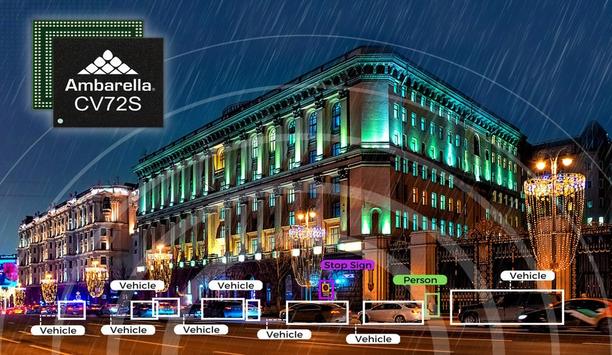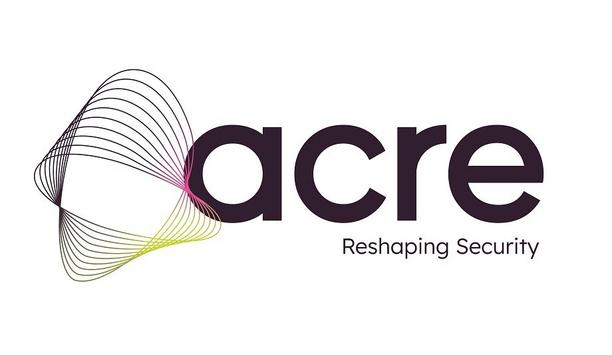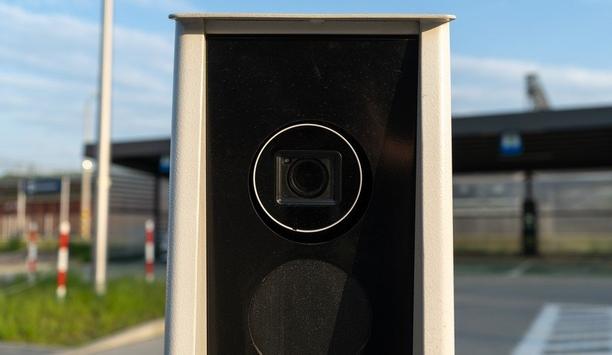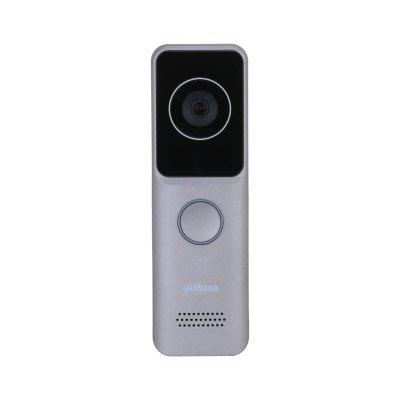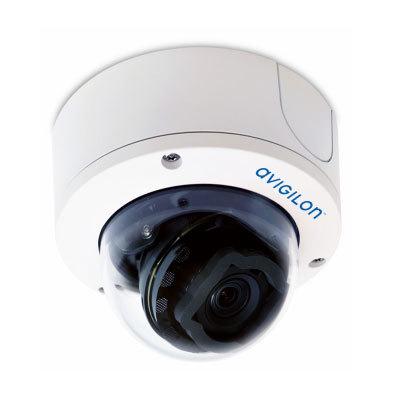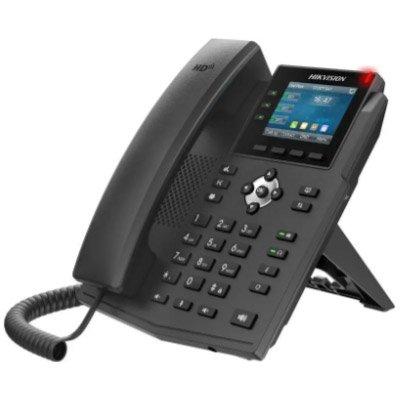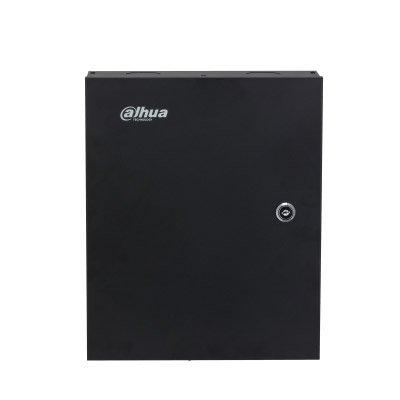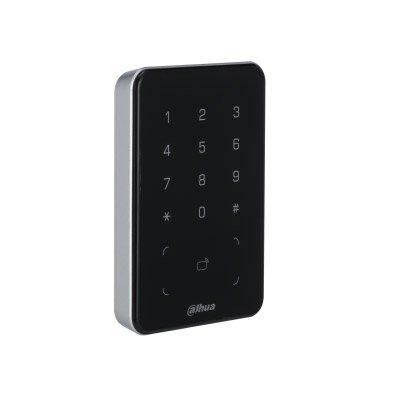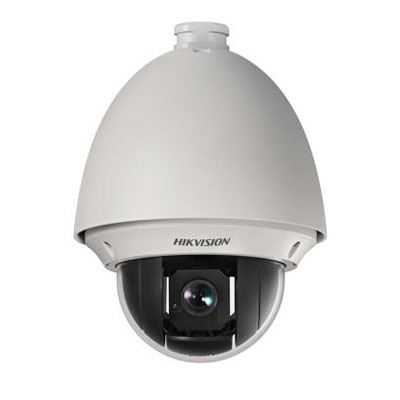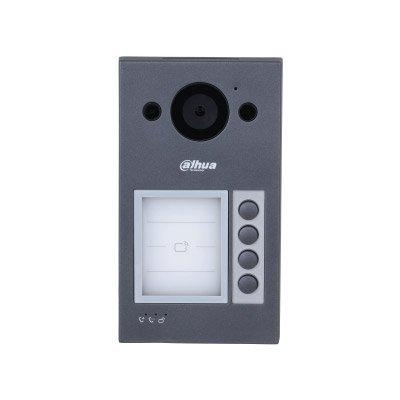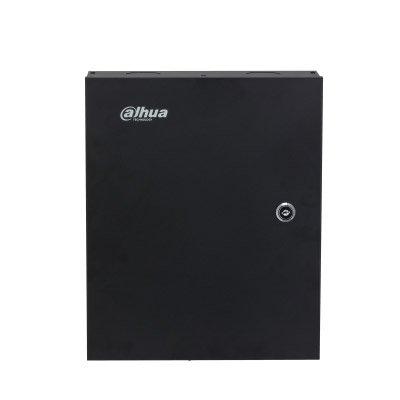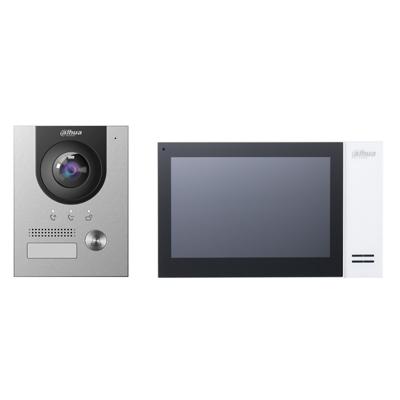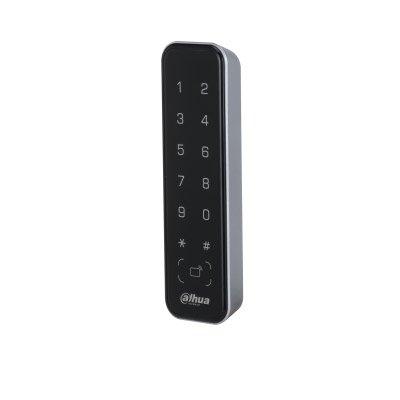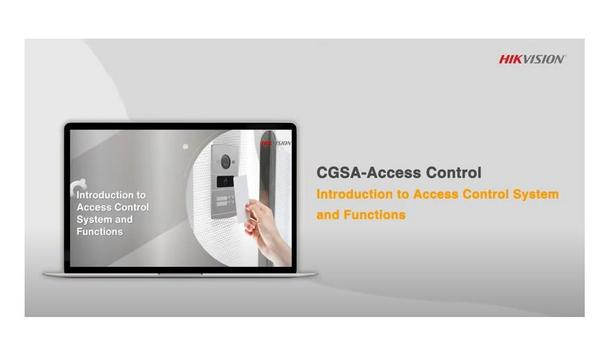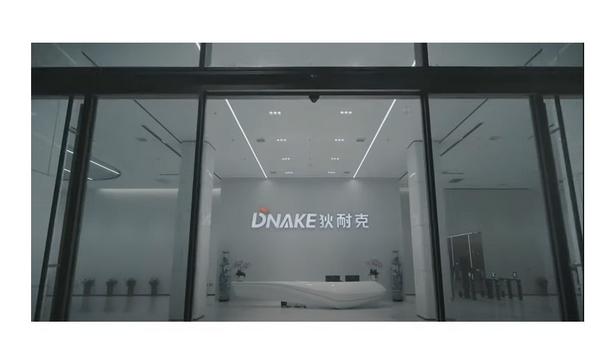Indoor Security
Quanergy Solutions, Inc., the pioneer in high-performance 3D LiDAR security and smart space solutions, is showcasing its comprehensive portfolio of hardware and software solutions for both outdoor and indoor applications at ISC West 2025 booth #29081. Featured products include: Q-Track 2.4 software with powerful AI-driven insights; Q-Track LR for long range intrusion detection and perimeter protection; Q-Track HD for optimal detection, tracking and classification in challenging environments lik...
Johnson Controls, the pioneer for smart, healthy and sustainable buildings, announced the introduction of PowerG +, the next generation of trusted PowerG technology. PowerG + adds new, in-demand features atop PowerG's strong foundational capabilities to power the next generation of security and home automation. Modern security protocols “PowerG + uplevels our proprietary wireless technology, helping us meet the evolving needs of dealers and end users while raising the bar for modern sec...
Data isn’t just the driver for project planning and design. The Eplan Data Portal offers users access to high-quality product catalogues from a continually growing pool of renowned component manufacturers. The portal has now passed the mark of more than two-million sets of static device data from around five hundred manufacturers! By using integrated configurators, users have far more than four million data sets at their fingertips. It’s a nearly limitless and ever-incr...
i-PRO Americas Inc. (formerly Panasonic Security), a pioneering manufacturer of edge computing cameras for security and public safety, announced the launch of VideoInsight™ version 8.0, the latest release of its powerful video management system (VMS). Designed to meet the evolving security needs of school administrators, IT directors and security teams, VideoInsight 8.0 simplifies campus safety with an intuitive, cost-effective platform that delivers seamless integration, advanced AI tool...
The practice of executive protection changed forever on Dec. 4, 2024, when UnitedHealthcare CEO Brian Thompson was shot outside a Manhattan, New York, hotel. The shocking event raised awareness in board rooms around the world about the need for, and challenges of, executive protection. Questions followed immediately, including why was the high-level executive not protected? Combination of risk and reward UnitedHealthcare’s stock price has gone down more than 20% since the sh...
The world’s pioneer security and facility services company, has been named to the Newsweek list of America's Greatest Workplaces for Women 2025 for the second consecutive year. This recognition underscores the company’s commitment to creating a supportive, inclusive environment where women can thrive professionally and personally. Receiving a ranking of four and a half stars, the publication evaluated the company’s compensation, work-life balance and proactive management on di...
News
dormakaba announces that it is expecting to report a significant increase in reported operating profit (EBIT, Earnings before interest and taxes) and net profit for the first half-year 2024/25 for the period ending 31 December 2024 relative to the period ending 31 December 2023. Net sales and adjusted EBITDA margin are expected to be in line with 2024/25 full-year guidance. Profit hike The significant increase in reported operating profit and net profit is attributable to lower restructuring costs and goodwill amortisation as well as the sale of a site in Montreal. Financial results for the first half-year as of 31 December 2024 will be reported on 25 February 2025 after approval by the Board of Directors.
Allegion UK, a pioneer in fire safety hardware and manufacturer of ‘Briton’ door controls, has expanded its library of customer support materials with new installation videos for its highly popular 2003 and 2003V surface-mounted door closers. Aim to publish a video Allegion’s newly published video series provides customers with an illustrative set of installation and adjustment instructions for door mount pull, transom mount, and parallel arm mount fixings across its major product lines. With each video, Allegion aims to improve the accuracy of door closer fittings by delivering a comprehensive walkthrough of the 2003 and 2003V installation process, from the product unboxing to its fixing methods and measurements, as illustrated by Briton’s unique self-adhesive Accufit template system. Step-by-step installation guidance Allegion will shortly complete a suite of digitally curated support materials, which includes technical datasheets With plans to further develop the video library to include step-by-step installation guidance for the Briton 2130B overhead closer, Allegion will shortly complete a suite of digitally curated support materials, which includes technical datasheets, product certifications, fixing templates, and downloadable service and maintenance instructions. Speaking on the ambitions behind the new installation videos, John Fairhurst, business development manager at Allegion UK, commented, “Where the safety of buildings and their occupants is reliant on fire door hardware, we too often identify inaccurate installation as a leading cause for inadequate product performance." Fire door safety standards "To prioritise fire safety, we believe it’s crucial to eliminate the issues associated with incorrect hardware installation, and by adding short and engaging video content to our resources, we can further support our customers in this area." “Driven by our ongoing commitment to improving fire door safety standards, and following the success of our updated Accufit system for the 2003 and 2003V, we have also developed a new Accufit template for the Briton 2130B, which is available now and will feature in a standalone series of installation videos set to launch later this year.”
Sentry Protection Products is excited to be exhibiting at LogiMAT 2025, taking place from March 11 – 13, 2025, in Messe Stuttgart, Germany. Every year the goal is to introduce something new in the world of warehousing and industrial safety that provides a solution to challenges faced by the customers. 2025 is no exception. Protecting columns Distribution centres and warehouses have grown in size and scale with large stretches of floor space becoming more valuable than ever. To meet this demand, these buildings contain fewer columns that are much larger than standard structural columns. As a pioneer in manufacturing impact-resistant and collision-warning products, Sentry has developed the Column Sentry FIT System, an innovative solution that assures that building owners can protect columns of every shape and size. Column Sentry FIT System The Column Sentry FIT System is three separate, interchangeable pieces working together to expand the range of column protection for larger and odd-sized columns. James Ryan, Sentry's owner will demo the FIT System and the configurator tool that allows customers to determine the correct combination of pieces needed to cover various column sizes.
Codelocks is expanding its Gate Solutions by Codelocks range with the introduction of the new Codelocks’ Surface Latch. This highly versatile self-locking, surface mount latch is designed for effortless installation on light-duty gates where traditional mortice latches are not an option. Codelocks’ new Surface Latch Jo Milne-Rowe, Managing Director at Codelocks said: “Protecting perimeters and outdoor areas is becoming a pressing concern for householders and businesses. In Codelocks’ new Surface Latch, we have developed a simple-to-install, self-locking system that provides reliable access control for external gates with low to medium traffic." "These are gates that don’t require heavier access control solutions. Typical uses include side gates into shared residential gardens or utility areas, private parking areas and driveways, up to small industrial or agricultural facilities.” Codelocks’ mechanical and electronic ranges The Surface Latch has a simple, surface mount installation and is non-handed The Surface Latch has a simple, surface mount installation and is non-handed, making it suitable for left- and right-handed and in-swing gates of between 35mm to 60mm thickness. It also works seamlessly with locks from Codelocks’ mechanical and electronic ranges, giving customers the reassurance of Codelocks’ high-performance and reliability. Gate Solutions by Codelocks range of products Codelocks’ Surface Latch comes in two finishes; Marine Grade black and Brushed Steel giving it an unobtrusive look and suitability for a range of external applications. Part of the comprehensive Gate Solutions by Codelocks range of products, that are designed to protect perimeters and outdoor areas with easy-to-use, Surface Latch offers effective access control that is perfect for residential and commercial settings.
Camden Door Controls is pleased to bring to market a new CM-SRX2 wireless relay receiver with an ultra-compact weather resistant enclosure. This receiver offers high-security performance with rugged construction, a built-in antenna, and IP65 weather resistance for indoor or outdoor use. Supporting up to 30 transmitters, this compact relay receiver is only 2-1/2” x 3-3/4” x 2-1/4”, and is ideal for confined spaces. Two Form ‘A’ relay outputs (1A @ 30 VDC) ensure reliable operation in any environment. CM-SR Series wireless systems CM-SR Series wireless systems are designed to activate locking devices, such as magnetic locks and electric strikes, and automatic gate and door operators. They’re ideal for one or two door access control, and are especially beneficial in retail, commercial, and healthcare facility settings. The rugged IP65 rated components are also perfect for gate or parking garage applications.
Xtract One Technologies announced its Xtract One Gateway (“Gateway”) has been selected to protect key hospital locations in Manitoba, including the province’s Health Sciences Centre and Crisis Response Centre locations operated by Shared Health. The system will redefine the security experience by balancing powerful threat detection with the seamless flow for individuals, enhancing safety standards, and optimising operational efficiency. Securing health facilities "Healthcare environments today face two security challenges: providing top-tier security while ensuring that both patients and caregivers feel safe and comfortable," said Peter Evans, CEO of Xtract One. “This is a trend we’re seeing across the healthcare sector, where providers are actively looking for solutions to these growing challenges, and we welcome the opportunity to play a role in securing health facility environments.” Screening solutions portfolio Xtract One’s screening solutions portfolio is designed to scan individuals and their belongings. These solutions allow seamless passage through checkpoints and reduce the need for separate bag searches, thereby dramatically improving screening times. Gateway unobtrusively scans individuals, their pockets, tags, and backpacks for potential mass casualty weapons while distinguishing harmless personal items like laptops, tablets, three-ring binders, notebooks, eyeglass cases, keys, and phones. This streamlines access into and out of facilities without disrupting the flow of movement.
dormakaba announces that it is expecting to report a significant increase in reported operating profit (EBIT, Earnings before interest and taxes) and net profit for the first half-year 2024/25 for the period ending 31 December 2024 relative to the period ending 31 December 2023. Net sales and adjusted EBITDA margin are expected to be in line with 2024/25 full-year guidance. Profit hike The significant increase in reported operating profit and net profit is attributable to lower restructuring costs and goodwill amortisation as well as the sale of a site in Montreal. Financial results for the first half-year as of 31 December 2024 will be reported on 25 February 2025 after approval by the Board of Directors.
Allegion UK, a pioneer in fire safety hardware and manufacturer of ‘Briton’ door controls, has expanded its library of customer support materials with new installation videos for its highly popular 2003 and 2003V surface-mounted door closers. Aim to publish a video Allegion’s newly published video series provides customers with an illustrative set of installation and adjustment instructions for door mount pull, transom mount, and parallel arm mount fixings across its major product lines. With each video, Allegion aims to improve the accuracy of door closer fittings by delivering a comprehensive walkthrough of the 2003 and 2003V installation process, from the product unboxing to its fixing methods and measurements, as illustrated by Briton’s unique self-adhesive Accufit template system. Step-by-step installation guidance Allegion will shortly complete a suite of digitally curated support materials, which includes technical datasheets With plans to further develop the video library to include step-by-step installation guidance for the Briton 2130B overhead closer, Allegion will shortly complete a suite of digitally curated support materials, which includes technical datasheets, product certifications, fixing templates, and downloadable service and maintenance instructions. Speaking on the ambitions behind the new installation videos, John Fairhurst, business development manager at Allegion UK, commented, “Where the safety of buildings and their occupants is reliant on fire door hardware, we too often identify inaccurate installation as a leading cause for inadequate product performance." Fire door safety standards "To prioritise fire safety, we believe it’s crucial to eliminate the issues associated with incorrect hardware installation, and by adding short and engaging video content to our resources, we can further support our customers in this area." “Driven by our ongoing commitment to improving fire door safety standards, and following the success of our updated Accufit system for the 2003 and 2003V, we have also developed a new Accufit template for the Briton 2130B, which is available now and will feature in a standalone series of installation videos set to launch later this year.”
Sentry Protection Products is excited to be exhibiting at LogiMAT 2025, taking place from March 11 – 13, 2025, in Messe Stuttgart, Germany. Every year the goal is to introduce something new in the world of warehousing and industrial safety that provides a solution to challenges faced by the customers. 2025 is no exception. Protecting columns Distribution centres and warehouses have grown in size and scale with large stretches of floor space becoming more valuable than ever. To meet this demand, these buildings contain fewer columns that are much larger than standard structural columns. As a pioneer in manufacturing impact-resistant and collision-warning products, Sentry has developed the Column Sentry FIT System, an innovative solution that assures that building owners can protect columns of every shape and size. Column Sentry FIT System The Column Sentry FIT System is three separate, interchangeable pieces working together to expand the range of column protection for larger and odd-sized columns. James Ryan, Sentry's owner will demo the FIT System and the configurator tool that allows customers to determine the correct combination of pieces needed to cover various column sizes.
Codelocks is expanding its Gate Solutions by Codelocks range with the introduction of the new Codelocks’ Surface Latch. This highly versatile self-locking, surface mount latch is designed for effortless installation on light-duty gates where traditional mortice latches are not an option. Codelocks’ new Surface Latch Jo Milne-Rowe, Managing Director at Codelocks said: “Protecting perimeters and outdoor areas is becoming a pressing concern for householders and businesses. In Codelocks’ new Surface Latch, we have developed a simple-to-install, self-locking system that provides reliable access control for external gates with low to medium traffic." "These are gates that don’t require heavier access control solutions. Typical uses include side gates into shared residential gardens or utility areas, private parking areas and driveways, up to small industrial or agricultural facilities.” Codelocks’ mechanical and electronic ranges The Surface Latch has a simple, surface mount installation and is non-handed The Surface Latch has a simple, surface mount installation and is non-handed, making it suitable for left- and right-handed and in-swing gates of between 35mm to 60mm thickness. It also works seamlessly with locks from Codelocks’ mechanical and electronic ranges, giving customers the reassurance of Codelocks’ high-performance and reliability. Gate Solutions by Codelocks range of products Codelocks’ Surface Latch comes in two finishes; Marine Grade black and Brushed Steel giving it an unobtrusive look and suitability for a range of external applications. Part of the comprehensive Gate Solutions by Codelocks range of products, that are designed to protect perimeters and outdoor areas with easy-to-use, Surface Latch offers effective access control that is perfect for residential and commercial settings.
Camden Door Controls is pleased to bring to market a new CM-SRX2 wireless relay receiver with an ultra-compact weather resistant enclosure. This receiver offers high-security performance with rugged construction, a built-in antenna, and IP65 weather resistance for indoor or outdoor use. Supporting up to 30 transmitters, this compact relay receiver is only 2-1/2” x 3-3/4” x 2-1/4”, and is ideal for confined spaces. Two Form ‘A’ relay outputs (1A @ 30 VDC) ensure reliable operation in any environment. CM-SR Series wireless systems CM-SR Series wireless systems are designed to activate locking devices, such as magnetic locks and electric strikes, and automatic gate and door operators. They’re ideal for one or two door access control, and are especially beneficial in retail, commercial, and healthcare facility settings. The rugged IP65 rated components are also perfect for gate or parking garage applications.
Xtract One Technologies announced its Xtract One Gateway (“Gateway”) has been selected to protect key hospital locations in Manitoba, including the province’s Health Sciences Centre and Crisis Response Centre locations operated by Shared Health. The system will redefine the security experience by balancing powerful threat detection with the seamless flow for individuals, enhancing safety standards, and optimising operational efficiency. Securing health facilities "Healthcare environments today face two security challenges: providing top-tier security while ensuring that both patients and caregivers feel safe and comfortable," said Peter Evans, CEO of Xtract One. “This is a trend we’re seeing across the healthcare sector, where providers are actively looking for solutions to these growing challenges, and we welcome the opportunity to play a role in securing health facility environments.” Screening solutions portfolio Xtract One’s screening solutions portfolio is designed to scan individuals and their belongings. These solutions allow seamless passage through checkpoints and reduce the need for separate bag searches, thereby dramatically improving screening times. Gateway unobtrusively scans individuals, their pockets, tags, and backpacks for potential mass casualty weapons while distinguishing harmless personal items like laptops, tablets, three-ring binders, notebooks, eyeglass cases, keys, and phones. This streamlines access into and out of facilities without disrupting the flow of movement.


Expert commentary
Digital access control has well-known benefits over traditional security, of course, but also costs attached to each stage of its lifetime. However, these costs are not fixed. Many factors – including building size, shape, type, location, national regulations and more – impact affordability and efficiency calculations. Crucially, the type of access solution a business selects – wired or wireless – impacts total operating costs, including during installation, running and any potential expansion or reconfiguration stages. Wireless installation Wiring premises can be expensive. So, the potential cost savings from choosing wireless digital access begin at the very start. Installation stage is the largest contributor to potential cost savings when businesses go wireless. In calculations for one report, access experts at ASSA ABLOY examined projected costs for a fictional 100-door installation. Labour savings for those who chose wireless over wired locks were 82.5%. Why? Firstly, because wireless installation is much faster. It is also less intrusive. Most wireless locking devices require little or no drilling of the door, whereas wired security needs cabling through and partly around a door – which means not just door damage, but the contracting of specialist electrical installers who may require multiple site visits. These costs add up. Digital access technology Torus aims for the highest level of LEED certification for all its new properties In Poland, for example, developer Torus aims for the highest level of LEED certification for all their new properties around Gdansk. Where possible, they choose products with Environmental Product Declarations (EPDs) and Green Circle documentation, favouring access solutions which reduce their carbon footprint. Wireless digital access technology is a natural choice. “The lack of wiring significantly reduces materials use, reduces costs, and ensures quick installation,” confirms Torus’ Roman Sokolowski. There’s no cabling, which cuts power consumption. There’s less damage to the building fabric and fitters make fewer journeys to and from the site. Adaptable locking solution By choosing a wireless solution, organisations also upgrade building security with little disruption. A wireless system makes it easier to improve security at an existing building via a retrofit process which does not inconvenience staff or disturb work routines. This was one goal at Plexal, a £15 million flexible work environment for London enterprise and academia. Plexal chose battery powered wireless locks integrated with DoorFlow, NetNodes’ online platform for managing and auditing building access. “Plexal required an adaptable locking solution for a range of different doors and, with no wiring required, it was quick and easy to install ASSA ABLOY Aperio® devices with minimal disruption,” confirms Stewart Johnson, Director at NetNodes. Cost savings with improved energy efficiency Choosing wireless over wired locking can play a vital role in reducing ongoing energy use Choosing wireless over wired locking can play an important role in reducing ongoing energy use – and, therefore, expenditure. Wholesale electricity prices in Europe are approximately double what they were in 2019, according to the IEA’s “Electricity 2024” report. For a variable cost such as energy, where businesses have little control over unit prices, it is critical to control usage, especially if high and/or changeable energy prices become what analysts at ING called “the new normal for business”. Thus, the fact that battery-powered locks consume much less energy than traditional wired solutions is increasingly relevant and important. Additional saving on energy costs Traditional wired door access devices often work via magnets connected permanently to mains electricity. These doors draw power around the clock to remain locked. Wireless locks work differently. They only “wake up” when presented with a credential, to make the access decision. This translates to an additional saving on energy costs during operation: more than 70%, or thousands of euros over a typical access system’s lifetime. Wireless digital access Wireless locks only need a change of their standard battery, which may be rechargeable Related energy and materials costs during in-use stage are also lower. Wireless locks only need a change of their standard battery – which may be rechargeable – typically once every two years. No specialist maintenance is required, saving on specialists and their travel to and from the site(s). By choosing wireless digital access, businesses help protect themselves against these ongoing costs, notably energy price increases and volatility. Cost-efficient flexible working, for staff and facilities managers Perhaps harder to quantify, but equally easy to imagine, the financial benefits of choosing a wireless digital solution are felt in the increased convenience and efficiency of daily operations. In the co-working sector, for example, flexible access to offices is a priority. As “fixed” office space rented by corporations continues to fall, co-working spaces are expected to keep growing, with one estimate suggesting almost 18% CAGR to 2030. To stand out from the competition, the founders of ULab in Alicante sought the latest innovations in access and design to create their 21st-century business centre. Part of the suite of digital access solutions from ASSA ABLOY, a SMARTair® system gave ULab real-time access management via battery-powered locks and Openowä, the Mobile Key solution for SMARTair, without any need to wire doors and other openings. SMARTair TS1000 Web interface With SMARTair and Openow, workspace residents can carry virtual keys on their smartphone With SMARTair and Openow, workspace residents can carry virtual keys on their smartphone; ULab’s security team update their rights over the air. An office manager can perform any operation remotely from the SMARTair TS1000 Web interface. In case of an emergency, they could lock-down the site or open doors remotely, for example. It’s convenient, efficient and boosts ULab’s security, benefiting users and managers. And because of SMARTair’s flexibility, they can comfortably welcome many more than their usual 100 daily users. “In addition to regular daily traffic, weekly traffic can almost multiply by 10 if an event is held,” says Enrique Burgos Pérez, Director at ULab. “We needed an access control system as flexible and convenient as SMARTair.” ASSA ABLOY benchmarking report Choosing wireless locks also adds flexibility – and can reduce costs – when an organisation reconfigures or expands their commercial space. High-quality wireless devices like SMARTair can typically be reinstalled at another opening without impacting reliability. They move to wherever is convenient. If a business is rethinking workspace to encourage flexible or hybrid work patterns, for example, cost efficiencies could be significant. Typical savings on office relocation or expansion are estimated at around 30% with wireless over wired locking, according to the same ASSA ABLOY benchmarking report. Cost efficiency and more control with ASSA ABLOY digital access To refit and improve their student accommodation, managers at the University of St Andrews sought energy- and cost-efficient access control. They chose Aperio, another innovative digital access solution from ASSA ABLOY. Approximately 1,600 doors so far are equipped with battery-powered Aperio escutcheons – without cabling. Aperio devices integrate fully with both the university’s existing central security system and their student ID card. University security managers continue to enjoy the efficiency benefits of monitoring and controlling access from a single point and in real-time, including for doors across multiple buildings. Aperio, another innovative digital access solution from ASSA ABLOY. Benefits of cost-efficiency In comparison to a wired solution, Aperio offers significant cost-efficiency benefits. Devices are wireless, so can be installed with little energy use and no need for wiring to the mains. They consume near-zero energy when idle and run on standard batteries, consuming little power during operation. Through the entire product life-cycle, Aperio combines reliability with cost effectiveness. “Aperio gives us central management and control,” says Pauline Brown, Associate Chief Information Officer at the University of St Andrews, “and contributes to our award-winning track record in energy efficiency.”
As the backbone of community welfare, healthcare facilities cater to crucial public needs from emergency care to specialised medical treatments, and due to its position as a significant facet of the world's critical infrastructure, the healthcare sector faces a multitude of challenges in ensuring patient and visitor security, managing high traffic, and safeguarding sensitive data. Medical sites, such as large hospitals and urgent care clinics, see a wide variety of patients, medical staff, administrative teams, and visitors throughout the day. In addition to protecting patients, visitors, and staff, healthcare environments must protect medical and patient data, ensure immediate response to urgent medical events, and maintain 24/7 operations. Security challenges Cloud-based solutions have made their mark on healthcare security, offering unparalleled scalability Addressing the security challenges presented by 24/7 availability and high patient and visitor traffic calls for a merging of technology, processes, and security strategies that go beyond what a typical security infrastructure would look like. Cloud-based solutions have made their mark on healthcare security, offering unparalleled scalability, accessibility, and integration capabilities. These advancements address the multifaceted demands of healthcare organisations, ensuring seamless around-the-clock operations while prioritising patient care and safety. Enhancing operational efficiency to save lives Cloud-based access control solutions have revolutionised how healthcare security professionals approach collaboration within medical facilities. These solutions offer unparalleled accessibility and insight into patient and visitor security information and access logs, improving coordination among security teams and leading to more accurate monitoring and response to developing medical events. By managing and operating access control solutions via the cloud, healthcare facilities can implement effective physical security measures while ensuring seamless collaboration among staff to deliver the highest medical care possible to patients across facilities. Physical access controls Cloud-based access control systems allow users to securely access and manage physical access controls Cloud-based access control systems allow multiple users to securely access and manage physical access controls and visitor management data simultaneously, enabling them to keep track of patient movements as they are transferred throughout the facility or between different facilities. For larger hospitals or medical campuses with multiple facilities hosting access controls via the cloud empowers users with the ability to find patients and patient data in an instant, as well as opening the door to collaborate with teams separated by long distances, ensuring all team members have access to the information they need to continue saving lives. Scaling the way to top-notch care Healthcare institutions are constantly growing and changing in response to evolving industry regulations and standards, and the access control solutions these organisations rely on should be able to scale to meet their changing needs. To ensure their access control systems can keep up with these growing demands, healthcare security professionals can invest in access control solutions hosted in the cloud to avoid the tedious hardware constraints that come with traditional on-premises solutions. Cloud solutions offer significant levels of scalability, enabling healthcare organisations to adjust their storage requirements and computing resources based on changing requirements on the fly. This capability for flexibility ensures users can manage large amounts of data without significant upfront investments in hardware. Cloud-based access control solutions Cloud-based access control solutions provide healthcare organisations with the flexibility they need to expand their access In addition to compliance with changing regulations, cloud-based access control solutions provide healthcare organisations with the flexibility they need to expand their access control platform across a growing campus or multiple buildings. Larger healthcare facilities typically consist of multiple sites of varying sizes across diverse landscapes, each with distinctive security needs. Systems hosted in the cloud provide scalability and flexibility for user organisations, allowing security teams to modify or expand upon their security infrastructure as needed without spending on costly new hardware. This adaptability is crucial for helping address varying risks over multiple sites, providing security personnel the flexibility they need to ensure patient safety over long distances. Ease of use for security teams To truly understand the value of a cloud-based access control system, healthcare security professionals must consider the long-term savings and ROI these solutions provide by bolstering operational efficiencies and enabling unprecedented scalability. These systems ensure compliance with changing standards and deliver a simplified user experience across platforms, prioritising security and ease of use for security teams across the healthcare sector.
Changing customer needs can make specifying an alarm system that will continue to deliver in the long term a challenge. However, the latest modular alarm solutions provide the opportunity to build a more individualised system from the outset, as well as offering the ability to up-scale in the future without causing disruption. Martin Wilson, North EMEA Regional Director at Resideo, looks at how alarm specialists can use this style of solution to both benefit customers and build their own business opportunities. Holistic sense of home security In a survey of 1,000 homeowners undertaken by Resideo, the results revealed that, although deterring burglary was still a top priority, consumers were moving to a more holistic sense of home security, wanting to bring convenience, and property and life safety, into the mix. An alarm system no longer needs to function on one level, alerting only to a break-in taking place Indeed, an alarm system no longer needs to function on one level, alerting only to a break-in taking place. The latest modular alarm systems offer the flexibility to create a scalable security and life safety platform for homes and small businesses, as well as giving installers the ability to suggest future update options that can be added as and when budget or requirement allows. Valuable up-scales Finding an alarm that can be scaled over time has the obvious business benefit of ensuring it is easy to revisit and add to as customers naturally expand their existing security. With many modular designs connected via WiFi, this not only means installers can opt for the right mix of sensor options from the get-go but also that any additions can be connected to the panel and system with ease. Many control hubs have winning features in their own right. The ProSeries security panel by Resideo, for instance, has an intuitive touchscreen, easy-to-read, full-colour display to reduce false alarms, plus a built-in camera, speaker and microphone, intuitive icons and even five-day weather alerts. The ProSeries security panel by Resideo has an intuitive touchscreen Natural up-scale opportunities For instance, for those in a property prone to flooding, a flood sensor may be a worthwhile addition For the installer, it has a plug-in power connection, trouble-shooting videos and end-user replaceable batteries to reduce unnecessary callouts. However, to build a scalable system, this needs to be coupled with the right, flexible solutions to tackle customer concerns. Taking the time to find out what is important to the end user is vital here and can lead to natural up-scale opportunities. For instance, for those in a property prone to flooding, a flood sensor may be a worthwhile addition. Similarly, a panic button and even medical transmitters may be of benefit to others. All this, as well as other options, such as glass break detectors, door and window sensors and indoor and outdoor MotionViewers™, are available within the ProSeries range, and can be updated or added to an installation as needed or as a property grows with minimum disruption. Adding life safety The ability to propose an alarm system that can bring together alerts for different threats – for both the home and life – under one platform, also has real appeal. Indeed, in a survey of 1,000 homeowners undertaken on behalf of Resideo, a system’s ability to alert to the dangers presented by fire and CO was mentioned as an important part of the decision-making process by 41% of participants. For many, this increased awareness may stem from the many regulation updates regarding smoke and carbon monoxide (CO) alarms that took place in 2022. In Scotland, for instance, carbon monoxide detectors were required to be fitted in any room with a carbon-fuelled appliance in all homes, rented or owned. Social housing properties In England, smoke and carbon monoxide alarms were required in all social housing properties In England, from the 1st of October 2002, smoke and carbon monoxide alarms were required in all social housing properties, with carbon monoxide alarms now mandatory in the private rented sector. Wales followed suit in December for rented accommodation. The new guidance for England and Wales requires at least one smoke alarm to be installed on each storey of a property, to help alert to domestic fires more quickly, ensuring a quicker evacuation and reduced risk of fatality. For professionals, systems such as ProSeries, can be connected to a series of smoke and carbon monoxide detectors, in a ‘one-go-all-go’ setup that means the alarm will go off if one of these threats are identified. Smart and connected benefits The total Connect 2.0 app gives ProSeries end-users the ability to view and control the security platform remotely. The Resideo Pro app currently gives installers the ability to view the system and connect to the central monitoring system. The platform also supports home automation as it works with Zwave devices. The platform also supports home automation as it works with Z-wave devices. The platform also supports home automation as it works with Z-wave devices There are also extra benefits for alarm professionals too. The AlarmNet 360™platform on which ProSeries is configured gives greater insight to improve business operations, increase efficiency and deliver insights on accounts to identify additional upsell opportunities and ongoing services. Providing the ability to remotely diagnose brings valuable time-saving options and avoids unnecessary callouts. It also means the ProSeries panel and peripherals programming can be accessed anytime, anywhere, using the cloud, allowing ease of programming, troubleshooting and account management on the go. Needs and future possibilities Changing a complete alarm system to apply new functions is never going to feature highly with the end user, nor does it work where longevity and sustainability is concerned. Having the ability to build a modular system and add to this as needed, whether this is at a property or a small business, provides benefits for both customers and professionals when it comes to meeting immediate needs and future possibilities. Add connectivity and remote access to this and you have a platform that can help streamline business operations, putting professionals more in touch with customers, and helping to spot future opportunities.
Security beat
Companies at GSX 2023 emphasised new ways that technologies such as artificial intelligence (AI) and the cloud can address long-standing issues in the security market. Among the exhibitors at the event in Dallas were companies seeking creative ways to apply technology, lower costs, and make the world a safer place. Reflecting on the exhibition, here are some additional takeaways. Expanding AI at the edge i-PRO is a company reflecting the continued expansion of edge AI capability in the security market. Today, more than half of the company’s lineup supports AI at the edge so the customer has a wide choice of form factors when seeking to leverage the feature set. AI processing relay, extended warranty i-PRO is increasing their warranty period from 5 to 7 years, which could be a lifetime warranty in some cases I-PRO also has an “AI processing relay” device that accepts non-AI video streams and applies edge analytics. AI has progressed from a high-end technology to a feature available in a variety of cameras at different price points. i-PRO is also increasing its warranty period from 5 to 7 years, which could be a lifetime warranty in some cases depending on a customer’s refresh schedule and lifecycle management. Active Guard, MonitorCast The company’s video management system (Video Insight) is continuing to build new features including “Active Guard,” an integrated metadata sorter. Their access control platform, MonitorCast, is a Mercury-based solution that is tightly integrated with Video Insight. Their embedded recorders now have PoE built in. “We can move at a faster pace to fill out our product line since leaving Panasonic,” says Adam Lowenstein, Director of Product Management. “We can focus our business on adapting to the market.” Emphasis on retail and other verticals Shoplifting is a timely issue, and retail is a vertical market that got a lot of attention at GSX 2023. “We see a lot of retailers who are primarily interested in protecting employee safety, but also assets,” says Brandon Davito, Verkada’s SVP of Product and Operations. “Shrinkage is a CEO-level priority.” “Retailers are getting more engaged with security posture, instead of letting perpetrators walk,” Davito adds. Intrusion detection Verkada has an intrusion product that will notify a central station if there is an alarm On the alarm side, Verkada has an intrusion product that will notify a central station if there is an alarm, and operators can review videos to confirm the alarm. Other capabilities seeking to discourage trespassers include sirens, strobes, and “talkdown” capabilities. International expansion Verkada continues to expand internationally with 16 offices in all, including Sydney, Tokyo, and London. The core value proposition is to enable customers to manage their onsite infrastructure more simply, including new elements such as PTZ cameras, intercoms, and visitor management. Verkada emphasises ease of use, including a mobile application to allow access to be managed across the user base. Forging partnerships “We are committed to the channel and industry, and we continue to build relationships and expand our reach,” says Davito. Among the industry relationships is a new partnership with Convergint, which was hinted at during the show and announced later the same day. They are also expanding their partnerships with Schlage, Allegion, and ASSA ABLOY. Working with other verticals They offer new features for K -12 schools, and a new alarm platform is easier to deploy and manage Verkada has also found success across multiple other verticals, notably healthcare, where they integrate with an electronic medical records system. They offer new features for K-12 schools, and a new alarm platform is easier to deploy and manage. They are integrating wireless locks to secure interior doors in schools, looking to secure the perimeter, and installing guest management systems. Transitioning the mid-market to the cloud Salient is squarely focused on the “mid-market,” a large swath of systems somewhere between small businesses and enterprise-level systems. Pure cloud systems are not as attractive to this market, which has a built-out infrastructure of on-premise systems. Adding a camera to an existing system is easier and less expensive than tying it to the cloud. Benefits of cloud It’s a market that may not be ready for the pure cloud, but there are benefits to be realised from adding a cloud element to existing systems. “We are continuing to augment our premise-based solutions with added cloud capabilities and flexibility,” says Sanjay Challa, Salient’s Chief Product Officer. The feedback Salient hears from their customers is “I want to own my data.” The hybrid cloud approach offers the right mix of control, flexibility, and unit economics. Cloud add-on capabilities We want to provide the flexibility for customers to go full-cloud as it becomes more economically attractive" Cloud add-on capabilities include bringing more intelligence about system operation to the user via the cloud. Over time, Salient expects to sell more cloud-centric offerings based on feedback from integrators and customers. “We want to provide the flexibility for customers to go full-cloud as it becomes more economically attractive over time,” says Challa. Vaidio AI technology Salient seeks to be a transition pioneer to help customers realise the path to the cloud. Their approach is “crawl, walk, run,” and helping customers make the transition at each stage. Salient has added AI to its product offering, incorporating Vaidio AI technology from IronYun into a powerful suite and broad array of on-premise analytics, which are gaining traction. The seamless approach makes it easy for customers to embrace AI analytics, although Salient remains broadly committed to open systems. Addressing ‘soft’ features for integrators AMAG is in the process of enhancing its product line with the next generation of access control panels. However, “product” is just part of the new developments at AMAG. In addition to “hard” features (such as products), the company is looking to improve its “soft” features, too; that is, how they work with the integrator channel. Integrator channel Rebuilding a process to make your organisation more efficient, is relatively easy; it just takes a lot of persistence" “We have the depth of our legacy customer base we can learn from, we just need to close the feedback loop quicker,” says Kyle Gordon, AMAG’s Executive Vice President of Global Sales, Marketing, and commercial Excellence, who acknowledges the value of reinstating face-to-face meetings after COVID. “We are laser-focused on nurturing our integrator channel,” he says. “Developing new features takes time, but rebuilding a process to make your organisation more efficient, that’s relatively easy; it just takes a lot of persistence,” says Gordon. More cohesive internal communication is another useful tool, he says. Disrupting the cloud based on price Wasabi is working to make cloud applications less expensive by offering a “disruptive” price on cloud storage, $6.99 per terabyte per month (80% less than hyperscalers). Contending “hyperscalers” like AWS are charging too much for cloud storage, Wasabi is using its own intellectual property and server equipment co-located in data centres around the world. Wasabi sells “hot cloud storage,” which refers to the fact that they only have one tier of storage and data is always accessible. In contrast, a company such as AWS might charge an “egress fee” for access to data stored in a “colder” tier. Cloud storage “We saw that several video surveillance companies had not yet adopted cloud storage, and we saw an opportunity to make it easy to use,” said Drew Schlussel, Wasabi’s Senior Director of Product Marketing. “We just install a little bit of software that allows them to store data in the cloud and bring it back from the cloud.” Performance, protection (cybersecurity), and price Wasabi works with integrators, resellers, and distributors and also integrates with VMS companies Wasabi works with integrators, resellers, and distributors and also integrates with VMS companies such as Genetec and Milestone. Emphasising performance, protection (cybersecurity), and price, their data centres are certified to SOC 2 and ISO 27001 standards. Faster throughput for weapons detection Xtract One is a young company focusing on weapons detection in a time of accelerated concern about gun issues post-COVID. Founded in Canada and based on technology developed at McMaster University, Xtract One has found a niche in providing weapons detection at stadiums and arenas. These customers already have budgets, and it is easy to shift the money to a newer, faster technology. Madison Square Garden in New York City is among its customers. Cost savings solution Xtract One can increase throughput to 30 to 50 people per entrance per minute (compared to 5 to 6 people per minute when using metal detectors). The solution doesn’t require anyone to empty their pockets and the system alarms on items beyond guns and knives. Using Xtract One allows customers to reduce the number of screening lanes and security staff, providing additional cost savings, all while getting fans through the screening process in half the time. Purpose-built sensors The system uses purpose-built sensors looking for specific characteristics, such as reflective and density properties In addition to stadiums and arenas, Xtract One, formerly Patriot One, is also getting “inbound” interest from schools, hospitals, manufacturers, and other verticals that makeup 50% of their business. “We’re on a rocket ride, mainly because the weapons issues are not going away,” says Peter Evans, CEO and Director at Xtract One. The system uses purpose-built sensors looking for specific characteristics, such as reflective and density properties, all correlated by an AI engine. Providing early warning of violence ZeroEyes is another company focused on weapons detection. Their AI gun detection system works with video images to identify if someone is “brandishing” (carrying) a weapon. In other words, the system does not detect concealed weapons. Identifying someone carrying a weapon provides early warning of a possible violent act. Increased response with AI-enables images Images are identified by AI and sent to a monitoring centre where a human confirms the image before contacting first responders. Knowing the location of a shooter enables staff to lock entry points, move people to safety, and direct first responders. The company was founded to leverage existing camera views to stop mass shootings and gun violence by reducing response times.
A pioneer in the access control sector since 1971, AMAG Technology is looking to the future and the next generation of products that will expand its services to customers. “In our vision, we have advanced approaches that will not only provide our partners with advanced technologies but also ones that are easier to install with tools to expand their services,” says David Sullivan, who was appointed President of the venerable access control company in September 2022. New challenges at AMAG Sullivan brings a new outlook to the AMAG business, a part of Allied Universal, and a new vision to lead the company into the future. We caught up with David Sullivan to discuss his new challenges at AMAG and the journey ahead as the company looks to the future. Q: How does your background inform your approach to leading AMAG? I believe that it helps me to define a vision for AMAG that will be unique and on the leading edge of our industry David Sullivan: With the exception of only a few short years, my career has been in access control. I have experience with several systems and have had the privilege to manage several successful access control companies. As a result, I bring a great deal of experience into my role at AMAG. I believe that it helps me to define a vision for AMAG that will be unique and on the leading edge of our industry. Q: How would you describe AMAG’s journey over the last several years and how do you see the future? Sullivan: Prior presidents of AMAG always shared their leadership vision and direction with senior leaders located in the United Kingdom. This had an impact on the full direction of the business, sometimes limiting its ultimate success. Before I became a part of AMAG, these senior leaders that were located in the UK retired, placing for the first time the full management responsibilities of the president. This has allowed me to integrate the business into a single team, with single objectives, and a single vision. We expect to begin to reveal this new vision in the coming weeks. We are excited about the future of AMAG and believe we will surprise the industry with our new products and approach in the coming months and years. Q: How important is it that a manufacturer provides both hardware and software solutions? How does AMAG’s approach (in general) differentiate it in the market? We can design the complete solution, providing functionality that others may find more difficult to accomplish Sullivan: Regardless of the manufacturer, we all provide hardware and software. An access control solution is not complete without both. Some of us choose to make our panels, and others do not. Those who are dependent on third-party suppliers are restricted to the developments and direction of that company, and while it might be perceived to be an open technology, it still is proprietary to the hardware manufacturer. AMAG has controlled its manufacturing of panels from day one. The result means that we can design the complete solution, providing functionality that others may find more difficult to accomplish. Q: How does the breadth of AMAG’s product suite provide advantages to customers and/or integrators? Sullivan: AMAG’s product portfolio is unique and provides the end user with an end-to-end identity management solution from one company. Our Control Room PSIM, Symmetry CONNECT Identity Management Solution, Symmetry Access Control, and Symmetry GUEST solutions all integrate to provide the user with a broad set of features and capabilities from a single provider. There is no finger-pointing when we come to support your system. We hold full responsibility for making it work and can quickly provide a resolution to any application difficulties the user may be experiencing. Q: How does AMAG address the divide between on-prem and cloud systems? How do you help customers make the transition and/or plan for the future? We are in the early stages of developing our next generation of access control in which we intend to provide on-prem Sullivan: In our current product portfolio, we have three products that are cloud-based. Our mobile credential platform (Symmetry Mobile), our visitor management solution (Symmetry GUEST), and our physical identity and access management solution (Symmetry CONNECT) are all offerings that operate in the cloud. We are in the early stages of developing our next generation of access control in which we intend to provide on-prem, web client, and cloud-based offerings. One of the primary objectives is to ensure that the large installed base of systems that are out there today will be able to migrate not only to our next generation but as well to the cloud if the client so desires. Q: What is AMAG’s approach to mobile credentialing? Sullivan: As an access control provider, adding Symmetry Mobile credentialing to our portfolio just made sense. We want our customers to have a forward-thinking solution with the opportunity to save money not only on the physical badges but the cost of printing and distributing badges. Mobile credentials can be easily issued and revoked remotely, reducing administrative overhead, and eliminating the need for physical inventory management. Organisations can centrally configure what devices are used and the read range for each type of device and operating system, thus providing flexibility. Symmetry Mobile offers a customised questionnaire that controls access and reduces liabilities. Q: What has surprised you the most in your first year or so leading AMAG? Not many companies are blessed with such a broad portfolio that is supported by a resource-rich company Sullivan: I wouldn’t say I was surprised by this as much as happy to see, but I would say that the quality of our people was a pleasant surprise. As well, the AMAG product offering is broad and has some unique elements. When coupled with the depth of the resources that we have in AMAG, I know that we are second to none. Not many companies are blessed with such a broad portfolio that is supported by a resource-rich company that has so many talented people. Q: Please describe your dealer channel, and how you are seeking to expand it. Sullivan: The AMAG products are sophisticated and typically are installed for higher-end applications. With this sophistication comes a need to be well able to install such a solution. We have a strong group of certified and loyal partners who help us to deliver these enterprise solutions. We desire to provide our existing partners with updated and competitive systems to offer to their end users. Q: What is the security industry’s (and/or AMAG’s) biggest challenge in the next five years? We need to find ways to provide both our channel partners and the customers with solutions that are easily integrated Sullivan: I believe that the advancements that we are seeing in technology provide our industry with the opportunity to truly change how security is provided to our collective customers. As we advance these solutions, we will need to do so responsibly and in a way that helps the channel’s abilities. We need to find ways to train our partners to both install and support these more complex solutions. At the same time, we need to find ways to provide both our channel partners and the customers with solutions that are easily integrated, moving away from proprietary closed systems to open and cohesive solutions. This will ensure that the users get the best, and most complete solutions. Q: What does the industry as a whole misunderstand about AMAG -- time to set the record straight! Sullivan: Well, I am not ready to openly share where we are heading. We are in the process of putting together some advanced approaches to how we will do business with our partners. We are focused on providing tools that will enhance their services to their customers, and with products that are leading edge. I can only state that all should keep their eyes on AMAG, because over the next few years, we are going to surprise some people, and more importantly make our loyal partners quite powerful.
When it comes to security cameras, the end user always wants more—more resolution, more artificial intelligence (AI), and more sensors. However, the cameras themselves do not change much from generation to generation; that is, they have the same power budgets, form factors and price. To achieve “more,” the systems-on-chips (SoCs) inside the video cameras must pack more features and integrate systems that would have been separate components in the past. For an update on the latest capabilities of SoCs inside video cameras, we turned to Jérôme Gigot, Senior Director of Marketing for AIoT at Ambarella, a manufacturer of SOCs. AIoT refers to the artificial intelligence of things, the combination of AI and IoT. Author's quote “The AI performance on today’s cameras matches what was typically done on a server just a generation ago,” says Gigot. “And, doing AI on-camera provides the threefold benefits of being able to run algorithms on a higher-resolution input before the video is encoded and transferred to a server, with a faster response time, and with complete privacy.” Added features of the new SOC Ambarella expects the first cameras with the SoC to emerge on the market during early part of 2024 Ambarella’s latest System on Chip (SOC) is the CV72S, which provides 6× the AI performance of the previous generation and supports the newer transformer neural networks. Even with its extra features, the CV72S maintains the same power envelope as the previous-generation SoCs. The CV72S is now available, sampling is underway by camera manufacturers, and Ambarella expects the first cameras with the SoC to emerge on the market during the early part of 2024. Examples of the added features of the new SOC include image processing, video encoders, AI engines, de-warpers for fisheye lenses, general compute cores, along with functions such as processing multiple imagers on a single SoC, fusion among different types of sensors, and the list goes on. This article will summarise new AI capabilities based on information provided by Ambarella. AI inside the cameras Gigot says AI is by far the most in-demand feature of new security camera SoCs. Customers want to run the latest neural network architectures; run more of them in parallel to achieve more functions (e.g., identifying pedestrians while simultaneously flagging suspicious behavior); run them at higher resolutions in order to pick out objects that are farther away from the camera. And they want to do it all faster. Most AI tasks can be split between object detection, object recognition, segmentation and higher-level “scene understanding” types of functions, he says. The latest AI engines support transformer network architectures (versus currently used convolutional neural networks). With enough AI horsepower, all objects in a scene can be uniquely identified and classified with a set of attributes, tracked across time and space, and fed into higher-level AI algorithms that can detect and flag anomalies. However, everything depends on which scene is within the camera’s field of view. “It might be an easy task for a camera in an office corridor to track a person passing by every couple of minutes; while a ceiling camera in an airport might be looking at thousands of people, all constantly moving in different directions and carrying a wide variety of bags,” Gigot says. Changing the configuration of video systems Low-level AI number crunching would typically be done on camera (at the source of the data) Even with more computing capability inside the camera, central video servers still have their place in the overall AI deployment, as they can more easily aggregate and understand information across multiple cameras. Additionally, low-level AI number crunching would typically be done on camera (at the source of the data). However, the increasing performance capabilities of transformer neural network AI inside the camera will reduce the need for a central video server over time. Even so, a server could still be used for higher-level decisions and to provide a representation of the world; along with a user interface for the user to make sense of all the data. Overall, AI-enabled security cameras with transformer network-based functionality will greatly reduce the use of central servers in security systems. This trend will contribute to a reduction in the greenhouse gases produced by data centres. These server farms consume a lot of energy, due to their power-hungry GPU and CPU chips, and those server processors also need to be cooled using air conditioning that emits additional greenhouse gases. New capabilities of transformer neural networks New kinds of AI architectures are being deployed inside cameras. Newer SoCs can accommodate the latest transformer neural networks (NNs), which now outperform currently used convolutional NNs for many vision tasks. Transformer neural networks require more AI processing power to run, compared to most convolutional NNs. Transformers are great for Natural Language Processing (NLP) as they have mechanisms to “make sense” of a seemingly random arrangement of words. Those same properties, when applied to video, make transformers very efficient at understanding the world in 3D. Transformer NNs require more AI processing power to run, compared to most convolutional NNs For example, imagine a multi-imager camera where an object needs to be tracked from one camera to the next. Transformer networks are also great at focussing their attention on specific parts of the scene—just as some words are more important than others in a sentence, some parts of a scene might be more significant from a security perspective. “I believe that we are currently just scratching the surface of what can be done with transformer networks in video security applications,” says Gigot. The first use cases are mainly for object detection and recognition. However, research in neural networks is focussing on these new transformer architectures and their applications. Expanded use cases for multi-image and fisheye cameras For multi-image cameras, again, the strategy is “less is more.” For example, if you need to build a multi-imager with four 4K sensors, then, in essence, you need to have four cameras in one. That means you need four imaging pipelines, four encoders, four AI engines, and four sets of CPUs to run the higher-level software and streaming. Of course, for cost, size, and power reasons, it would be extremely inefficient to have four SoCs to do all this processing. Therefore, the latest SoCs for security need to integrate four times the performance of the last generation’s single-imager 4K cameras, in order to process four sensors on a single SoC with all the associated AI algorithms. And they need to do this within a reasonable size and power budget. The challenge is very similar for fisheye cameras, where the SoC needs to be able to accept very high-resolution sensors (i.e., 12MP, 16MP and higher), in order to be able to maintain high resolution after de-warping. Additionally, that same SoC must create all the virtual views needed to make one fisheye camera look like multiple physical cameras, and it has to do all of this while running the AI algorithms on every one of those virtual streams at high resolution. The power of ‘sensor fusion’ Sensor fusion is the ability to process multiple sensor types at the same time and correlate all that information Sensor fusion is the ability to process multiple sensor types at the same time (e.g., visual, radar, thermal and time of flight) and correlate all that information. Performing sensor fusion provides an understanding of the world that is greater than the information that could be obtained from any one sensor type in isolation. In terms of chip design, this means that SoCs must be able to interface with, and natively process, inputs from multiple sensor types. Additionally, they must have the AI and CPU performance required to do either object-level fusion (i.e., matching the different objects identified through the different sensors), or even deep-level fusion. This deep fusion takes the raw data from each sensor and runs AI on that unprocessed data. The result is machine-level insights that are richer than those provided by systems that must first go through an intermediate object representation. In other words, deep fusion eliminates the information loss that comes from preprocessing each individual sensor’s data before fusing it with the data from other sensors, which is what happens in object-level fusion. Better image quality AI can be trained to dramatically improve the quality of images captured by camera sensors in low-light conditions, as well as high dynamic range (HDR) scenes with widely contrasting dark and light areas. Typical image sensors are very noisy at night, and AI algorithms can be trained to perform excellently at removing this noise to provide a clear colour picture—even down to 0.1 lux or below. This is called neural network-based image signal processing, or AISP for short. AI can be trained to perform all these functions with much better results than traditional video methods Achieving high image quality under difficult lighting conditions is always a balance among removing noise, not introducing excessive motion blur, and recovering colours. AI can be trained to perform all these functions with much better results than traditional video processing methods can achieve. A key point for video security is that these types of AI algorithms do not “create” data, they just remove noise and clean up the signal. This process allows AI to provide clearer video, even in challenging lighting conditions. The results are better footage for the humans monitoring video security systems, as well as better input for the AI algorithms analysing those systems, particularly at night and under high dynamic range conditions. A typical example would be a camera that needs to switch to night mode (black and white) when the environmental light falls below a certain lux level. By applying these specially trained AI algorithms, that same camera would be able to stay in colour mode and at full frame rate--even at night. This has many advantages, including the ability to see much farther than a typical external illuminator would normally allow, and reduced power consumption. ‘Straight to cloud’ architecture For the cameras themselves, going to the cloud or to a video management system (VMS) might seem like it doesn’t matter, as this is all just streaming video. However, the reality is more complex; especially for cameras going directly to the cloud. When cameras stream to the cloud, there is usually a mix of local, on-camera storage and streaming, in order to save on bandwidth and cloud storage costs. To accomplish this hybrid approach, multiple video-encoding qualities/resolutions are being produced and sent to different places at the same time; and the camera’s AI algorithms are constantly running to optimise bitrates and orchestrate those different video streams. The ability to support all these different streams, in parallel, and to encode them at the lowest bitrate possible, is usually guided by AI algorithms that are constantly analyzing the video feeds. These are just some of the key components needed to accommodate this “straight to cloud” architecture. Keeping cybersecurity top-of-mind Ambarella’s SoCs always implement the latest security mechanisms, both hardware and software Ambarella’s SoCs always implement the latest security mechanisms, both in hardware and software. They accomplish this through a mix of well-known security features, such as ARM trust zones and encryption algorithms, and also by adding another layer of proprietary mechanisms with things like dynamic random access memory (DRAM) scrambling and key management policies. “We take these measures because cybersecurity is of utmost importance when you design an SoC targeted to go into millions of security cameras across the globe,” says Gigot. ‘Eyes of the world’ – and more brains Cameras are “the eyes of the world,” and visual sensors provide the largest portion of that information, by far, compared to other types of sensors. With AI, most security cameras now have a brain behind those eyes. As such, security cameras have the ability to morph from just a reactive and security-focused apparatus to a global sensing infrastructure that can do everything from regulating the AC in offices based on occupancy, to detecting forest fires before anyone sees them, to following weather and world events. AI is the essential ingredient for the innovation that is bringing all those new applications to life, and hopefully leading to a safer and better world.
Case studies
Type of Site: Apartment Building Location: Chodkiewicza 10, Warszawa, Poland The situation This housing estate, built in 2008, features outdated 2-wire wiring. It consists of two buildings, each with 48 apartments. One entrance to the housing estate and one entrance to each building. The previous intercom system was relatively old and unstable, with frequent component failures. Consequently, there is a strong need for a reliable and future-proof IP intercom solution. Solution highlights Easy Intercom Retrofitting with Existing Cables. Remote Access with App-based Features. Good Scalability for Easy Addition of New Units or Expansion. Installed products S615 4.3” Facial Recognition Android Door Station 290-S8 7” Linux Indoor Monitor (2-wire Version) Solution benefits Future-proofing: With DNAKE 2-wire IP intercom solution, residents can enjoy high-quality audio and video communication, multiple access options including remote access, and integration with surveillance systems, providing a more versatile and secure living experience. Cost Efficiency: By using existing 2-wire cables, the need for new cabling is minimised, reducing both material and labour costs. DNAKE 2-wire IP intercom solution is more budget-friendly compared to systems that require extensive new wiring. Simplified Installation: The use of existing wiring simplifies the installation process, reducing the time and complexity involved. This can lead to faster project completion and less disruption to residents or occupants. Scalability: DNAKE 2-wire IP intercom solutions are scalable, allowing for easy addition of new units or expansion as needed, making it adaptable to changing requirements.
The building, constructed in 2005, consists of three 12-story towers with a total of 309 residential units. Residents have been experiencing issues with noise and unclear sound, which hinder effective communication and lead to frustration. Additionally, there is an increased need for remote unlocking capabilities. The existing 2-wire system, which supports only basic intercom functions, fails to meet the current needs of the residents. Solution highlights Easy Intercom Retrofitting with Existing Cables Tenant’s Own Choice on Answering Units Installed products S615 4.3” Facial Recognition Android Door Station E211 Audio Indoor Monitor 290M-S8 7” Linux Indoor Monitor (2-wire Version) 902C-A Master Station Cloud Solution - Smart Pro Solution benefits For Installer DNAKE 2-wire IP intercom solution leverages existing wiring, which allows for a quicker and more efficient installation process. This solution helps avoid the costs associated with new cabling and extensive rewiring, keeping project costs down and making the retrofit more economically attractive. For Property Manager The Central Management System (CMS) is an on-premises software solution for managing video intercom systems via the LAN, which has greatly improved the efficiency of property managers. Additionally, with the 902C-A master station, property managers can receive security alarms to take immediate action, and remotely unlock doors for visitors. For Residence Residents can choose their preferred answering unit based on their needs. Options include Linux-based or Android-based indoor monitors, audio-only indoor monitors, or even app-based services without a physical indoor monitor. With DNAKE's cloud service, residents can unlock doors from anywhere, at any time.
The client, a highly esteemed law enforcement agency, is responsible for maintaining order and ensuring the safety of its citizens. This national force operates across the entire country, with numerous establishments that require technologically advanced systems for effective operation. Their mission focuses on safeguarding the public, preventing, and detecting crime, and maintaining law and order. Upgrade the surveillance systems They had previously partnered with a globally recognised technology company for their technological requirements. However, a recent initiative to upgrade the surveillance systems in all major barracks across the country set forth a new challenge, requiring the introduction of a new, equally reliable technology partner. The challenge The objective was to modernise the video surveillance installations across their numerous establishments The national law enforcement agency sought to enhance its surveillance capabilities. Their objective was to modernise the video surveillance installations across numerous establishments throughout the country. This upgrade required both indoor and outdoor switches to connect the cameras being deployed. The sheer scale and complexity of the project demanded a reliable and efficient solution that could guarantee seamless connectivity and high performance. The solution The acre security expert team acknowledged that the client was already partnered with a renowned technology company, but their new requirements required the incorporation of another brand. Its comprehensive range of both indoor and outdoor switches offered the solution they needed. Acre proposed the integration of ComNet switches, ensuring uniformity across all locations. Recognising the importance of both technical specifications and after-sales support, they engaged in in-depth discussions with the project leaders. Our team's expertise and commitment to delivering high-quality solutions eventually convinced the client to introduce ComNet into their infrastructure. The result The installation of the new switches is still underway, but the early feedback has been extremely positive. The upgraded infrastructure is performing flawlessly, meeting the client's high expectations and requirements. The client has expressed satisfaction with the solution, reinforcing confidence in the tailored technological solutions.
The Kent İncek project, a residential complex located in the heart of Ankara, has recently implemented DNAKE's advanced IP intercom solutions to enhance security and convenience for its 198 households in two blocks. Kent Incek offers privilege in its social facilities as well as in its green areas, providing residents with a healthy living environment that includes an indoor swimming pool and fitness centre. The solution DNAKE IP intercom products are designed to meet the evolving needs of modern residential complexes DNAKE IP intercom products are designed to meet the evolving needs of modern residential complexes, providing a range of features that are both practical and user-friendly. At the Kent İncek project, DNAKE's IP intercom solutions have been integrated into the existing security system, allowing for seamless communication between residents and visitors. The intercoms offer crystal-clear audio and video quality, ensuring that every interaction is clear and secure. Door entry methods of the 902D-A9 Installed and ready to upgrade door entry, the 4.3-inch SIP video door phone 902D-A9 offers crisp, clear visuals for video calls and access control. Users can effortlessly navigate through an intuitive interface, facilitating seamless and smart living experiences. The device offers multiple ways to grant access to authorised personnel, making it a versatile and efficient solution for residential properties. One of the primary door entry methods is through video calling, which allows users to remotely communicate with visitors and grant or deny access in real time. One of the primary door entry methods is through video calling, which allows users to remotely communicate with visitors and grant or deny access in real time. This feature ensures that only authorised individuals can enter the premises, adding an extra layer of security to the property. In addition to video calling, the 902D-A9 also supports access control through various authentication methods, such as facial recognition, PIN code, or RFID card. Overall, the door entry methods of the 902D-A9 combine cutting-edge technology with user-friendly design, making it an effective and convenient solution for controlling access to any property. Advanced features and sleek design While the state-of-the-art door station secures the entry of the home, the 7-inch indoor monitor offers an extra layer of safety While the state-of-the-art door station secures the entrance of the home, the seven-inch indoor monitor offers an additional layer of protection. The seven-inch indoor monitor, renowned for its advanced features and sleek design, has been embraced by homeowners seeking to upgrade their security systems. With crystal-clear high-definition resolution and remote access capabilities, this monitor provides comprehensive security and convenient communication for families. Additionally, after connecting the indoor monitor to IP cameras, remote monitoring and control capabilities allow users to stay informed and in control of their home's security. Monitoring and management Another vital component of the door entry system is the master station 902C-A, a command centre placed on the table of the guard room. Elegantly designed and crafted for ease of use, this station sits on the table of the guard room, ready to spring into action at a moment's notice. This advanced device not only streamlines the monitoring and management of the community but also offers a plethora of features that elevate the community's protection to the next level. One of its standout capabilities is its ability to receive calls from both the door station and indoor monitor. Comprehensive coverage and protection In addition to its transmission capability, the master station assigns them to unlock doors remotely With a simple press of a button, the property manager or security person can communicate with visitors or tenants easily. In addition to its communication capability, the master station also empowers them to unlock doors remotely. The master station serves as the central hub for managing alarms and messages. Moreover, this remarkable device's ability to integrate with 16 IP cameras transforms it into a powerful surveillance hub, providing unparalleled situational awareness. With a full view of the community, the property manager can keep tabs on multiple locations simultaneously, ensuring comprehensive coverage and protection. The result "We are thrilled to have our IP intercom products selected for the Kent İncek project," said the spokesperson for DNAKE. "Our solutions are designed to provide the highest level of security and convenience, and we're confident that they will meet the needs of the project's residents." The installation of DNAKE's IP intercom products at the Kent İncek project is a testament to the growing demand for advanced security solutions in Turkey. With DNAKE's IP intercom solutions in place, residents of Kent İncek can rest assured that their security is in good hands. The cutting-edge technology will not only enhance their daily lives but also provide peace of mind, knowing that their homes and families are well protected.
A newly built, small, intimate building with 26 high-standard apartments. It features two staircases and two passages with access control between the underground garage and the staircases. DNAKE IP intercom solution Limited apartments often signify a sense of exclusivity and high-end living. DNAKE IP video intercom solution delivers both security and convenience for modern residential living. The 902D-B6 offers a hands-free and contactless entry experience. Access control is installed at entry points between the underground garage and staircases to enhance security. Residents can unlock doors using both the E216 indoor monitor and the mobile application.
Type of Site: Apartment Building Location: Nagodziców 6-18, Warszawa, Poland The situation This is an older housing estate located in Nagodziców 6-18, Poland with 3 entrance gates and 105 apartments. The investor wants to retrofit the property to improve community safety and elevate residents' smart living experience. One of the main challenges in this retrofit is managing the wiring. How can the project minimize disruption to the building’s occupants and reduce the impact on residents’ daily activities? Additionally, how can costs be kept down to make the retrofit more economically attractive? Solution highlights No Wiring No Indoor Units Fast, Cost-Saving Retrofits Future-Proof Intercom Solution Installed products S615 4.3” Facial Recognition Android Door Station Smart Pro, an App-based Service without a Physical Indoor Monitor Solution benefits No Indoor Units, Cost-effectiveness: Users pay for a subscription-based service, which is often more affordable and predictable DNAKE cloud-based intercom services eliminate the need for expensive hardware infrastructure and maintenance costs associated with traditional intercom systems. Users don't have to invest in indoor units or wiring installations. Instead, users pay for a subscription-based service, which is often more affordable and predictable. No Wiring, Ease of Deployment: Setting up DNAKE cloud-based intercom service is relatively easier and quicker compared to traditional systems. There's no need for extensive wiring or complicated installations. Residents can connect to the intercom service using their smartphones, making it more convenient and accessible. Easy and Multiple Access Ways: In addition to facial recognition, PIN code, and IC/ID card, there are also multiple app-based access methods available, including calling & app unlocking, QR code, temp key, and Bluetooth. Residence can manage access from anywhere at any time.
Type of Site: Apartment Building Location: Chodkiewicza 10, Warszawa, Poland The situation This housing estate, built in 2008, features outdated 2-wire wiring. It consists of two buildings, each with 48 apartments. One entrance to the housing estate and one entrance to each building. The previous intercom system was relatively old and unstable, with frequent component failures. Consequently, there is a strong need for a reliable and future-proof IP intercom solution. Solution highlights Easy Intercom Retrofitting with Existing Cables. Remote Access with App-based Features. Good Scalability for Easy Addition of New Units or Expansion. Installed products S615 4.3” Facial Recognition Android Door Station 290-S8 7” Linux Indoor Monitor (2-wire Version) Solution benefits Future-proofing: With DNAKE 2-wire IP intercom solution, residents can enjoy high-quality audio and video communication, multiple access options including remote access, and integration with surveillance systems, providing a more versatile and secure living experience. Cost Efficiency: By using existing 2-wire cables, the need for new cabling is minimised, reducing both material and labour costs. DNAKE 2-wire IP intercom solution is more budget-friendly compared to systems that require extensive new wiring. Simplified Installation: The use of existing wiring simplifies the installation process, reducing the time and complexity involved. This can lead to faster project completion and less disruption to residents or occupants. Scalability: DNAKE 2-wire IP intercom solutions are scalable, allowing for easy addition of new units or expansion as needed, making it adaptable to changing requirements.
The building, constructed in 2005, consists of three 12-story towers with a total of 309 residential units. Residents have been experiencing issues with noise and unclear sound, which hinder effective communication and lead to frustration. Additionally, there is an increased need for remote unlocking capabilities. The existing 2-wire system, which supports only basic intercom functions, fails to meet the current needs of the residents. Solution highlights Easy Intercom Retrofitting with Existing Cables Tenant’s Own Choice on Answering Units Installed products S615 4.3” Facial Recognition Android Door Station E211 Audio Indoor Monitor 290M-S8 7” Linux Indoor Monitor (2-wire Version) 902C-A Master Station Cloud Solution - Smart Pro Solution benefits For Installer DNAKE 2-wire IP intercom solution leverages existing wiring, which allows for a quicker and more efficient installation process. This solution helps avoid the costs associated with new cabling and extensive rewiring, keeping project costs down and making the retrofit more economically attractive. For Property Manager The Central Management System (CMS) is an on-premises software solution for managing video intercom systems via the LAN, which has greatly improved the efficiency of property managers. Additionally, with the 902C-A master station, property managers can receive security alarms to take immediate action, and remotely unlock doors for visitors. For Residence Residents can choose their preferred answering unit based on their needs. Options include Linux-based or Android-based indoor monitors, audio-only indoor monitors, or even app-based services without a physical indoor monitor. With DNAKE's cloud service, residents can unlock doors from anywhere, at any time.
The client, a highly esteemed law enforcement agency, is responsible for maintaining order and ensuring the safety of its citizens. This national force operates across the entire country, with numerous establishments that require technologically advanced systems for effective operation. Their mission focuses on safeguarding the public, preventing, and detecting crime, and maintaining law and order. Upgrade the surveillance systems They had previously partnered with a globally recognised technology company for their technological requirements. However, a recent initiative to upgrade the surveillance systems in all major barracks across the country set forth a new challenge, requiring the introduction of a new, equally reliable technology partner. The challenge The objective was to modernise the video surveillance installations across their numerous establishments The national law enforcement agency sought to enhance its surveillance capabilities. Their objective was to modernise the video surveillance installations across numerous establishments throughout the country. This upgrade required both indoor and outdoor switches to connect the cameras being deployed. The sheer scale and complexity of the project demanded a reliable and efficient solution that could guarantee seamless connectivity and high performance. The solution The acre security expert team acknowledged that the client was already partnered with a renowned technology company, but their new requirements required the incorporation of another brand. Its comprehensive range of both indoor and outdoor switches offered the solution they needed. Acre proposed the integration of ComNet switches, ensuring uniformity across all locations. Recognising the importance of both technical specifications and after-sales support, they engaged in in-depth discussions with the project leaders. Our team's expertise and commitment to delivering high-quality solutions eventually convinced the client to introduce ComNet into their infrastructure. The result The installation of the new switches is still underway, but the early feedback has been extremely positive. The upgraded infrastructure is performing flawlessly, meeting the client's high expectations and requirements. The client has expressed satisfaction with the solution, reinforcing confidence in the tailored technological solutions.
The Kent İncek project, a residential complex located in the heart of Ankara, has recently implemented DNAKE's advanced IP intercom solutions to enhance security and convenience for its 198 households in two blocks. Kent Incek offers privilege in its social facilities as well as in its green areas, providing residents with a healthy living environment that includes an indoor swimming pool and fitness centre. The solution DNAKE IP intercom products are designed to meet the evolving needs of modern residential complexes DNAKE IP intercom products are designed to meet the evolving needs of modern residential complexes, providing a range of features that are both practical and user-friendly. At the Kent İncek project, DNAKE's IP intercom solutions have been integrated into the existing security system, allowing for seamless communication between residents and visitors. The intercoms offer crystal-clear audio and video quality, ensuring that every interaction is clear and secure. Door entry methods of the 902D-A9 Installed and ready to upgrade door entry, the 4.3-inch SIP video door phone 902D-A9 offers crisp, clear visuals for video calls and access control. Users can effortlessly navigate through an intuitive interface, facilitating seamless and smart living experiences. The device offers multiple ways to grant access to authorised personnel, making it a versatile and efficient solution for residential properties. One of the primary door entry methods is through video calling, which allows users to remotely communicate with visitors and grant or deny access in real time. One of the primary door entry methods is through video calling, which allows users to remotely communicate with visitors and grant or deny access in real time. This feature ensures that only authorised individuals can enter the premises, adding an extra layer of security to the property. In addition to video calling, the 902D-A9 also supports access control through various authentication methods, such as facial recognition, PIN code, or RFID card. Overall, the door entry methods of the 902D-A9 combine cutting-edge technology with user-friendly design, making it an effective and convenient solution for controlling access to any property. Advanced features and sleek design While the state-of-the-art door station secures the entry of the home, the 7-inch indoor monitor offers an extra layer of safety While the state-of-the-art door station secures the entrance of the home, the seven-inch indoor monitor offers an additional layer of protection. The seven-inch indoor monitor, renowned for its advanced features and sleek design, has been embraced by homeowners seeking to upgrade their security systems. With crystal-clear high-definition resolution and remote access capabilities, this monitor provides comprehensive security and convenient communication for families. Additionally, after connecting the indoor monitor to IP cameras, remote monitoring and control capabilities allow users to stay informed and in control of their home's security. Monitoring and management Another vital component of the door entry system is the master station 902C-A, a command centre placed on the table of the guard room. Elegantly designed and crafted for ease of use, this station sits on the table of the guard room, ready to spring into action at a moment's notice. This advanced device not only streamlines the monitoring and management of the community but also offers a plethora of features that elevate the community's protection to the next level. One of its standout capabilities is its ability to receive calls from both the door station and indoor monitor. Comprehensive coverage and protection In addition to its transmission capability, the master station assigns them to unlock doors remotely With a simple press of a button, the property manager or security person can communicate with visitors or tenants easily. In addition to its communication capability, the master station also empowers them to unlock doors remotely. The master station serves as the central hub for managing alarms and messages. Moreover, this remarkable device's ability to integrate with 16 IP cameras transforms it into a powerful surveillance hub, providing unparalleled situational awareness. With a full view of the community, the property manager can keep tabs on multiple locations simultaneously, ensuring comprehensive coverage and protection. The result "We are thrilled to have our IP intercom products selected for the Kent İncek project," said the spokesperson for DNAKE. "Our solutions are designed to provide the highest level of security and convenience, and we're confident that they will meet the needs of the project's residents." The installation of DNAKE's IP intercom products at the Kent İncek project is a testament to the growing demand for advanced security solutions in Turkey. With DNAKE's IP intercom solutions in place, residents of Kent İncek can rest assured that their security is in good hands. The cutting-edge technology will not only enhance their daily lives but also provide peace of mind, knowing that their homes and families are well protected.
A newly built, small, intimate building with 26 high-standard apartments. It features two staircases and two passages with access control between the underground garage and the staircases. DNAKE IP intercom solution Limited apartments often signify a sense of exclusivity and high-end living. DNAKE IP video intercom solution delivers both security and convenience for modern residential living. The 902D-B6 offers a hands-free and contactless entry experience. Access control is installed at entry points between the underground garage and staircases to enhance security. Residents can unlock doors using both the E216 indoor monitor and the mobile application.
Type of Site: Apartment Building Location: Nagodziców 6-18, Warszawa, Poland The situation This is an older housing estate located in Nagodziców 6-18, Poland with 3 entrance gates and 105 apartments. The investor wants to retrofit the property to improve community safety and elevate residents' smart living experience. One of the main challenges in this retrofit is managing the wiring. How can the project minimize disruption to the building’s occupants and reduce the impact on residents’ daily activities? Additionally, how can costs be kept down to make the retrofit more economically attractive? Solution highlights No Wiring No Indoor Units Fast, Cost-Saving Retrofits Future-Proof Intercom Solution Installed products S615 4.3” Facial Recognition Android Door Station Smart Pro, an App-based Service without a Physical Indoor Monitor Solution benefits No Indoor Units, Cost-effectiveness: Users pay for a subscription-based service, which is often more affordable and predictable DNAKE cloud-based intercom services eliminate the need for expensive hardware infrastructure and maintenance costs associated with traditional intercom systems. Users don't have to invest in indoor units or wiring installations. Instead, users pay for a subscription-based service, which is often more affordable and predictable. No Wiring, Ease of Deployment: Setting up DNAKE cloud-based intercom service is relatively easier and quicker compared to traditional systems. There's no need for extensive wiring or complicated installations. Residents can connect to the intercom service using their smartphones, making it more convenient and accessible. Easy and Multiple Access Ways: In addition to facial recognition, PIN code, and IC/ID card, there are also multiple app-based access methods available, including calling & app unlocking, QR code, temp key, and Bluetooth. Residence can manage access from anywhere at any time.


Round table discussion
There is safety in numbers, or so the expression goes. Generally speaking, several employees working together tend to be safer than a single employee working alone. Even so, some environments require that workers complete their jobs alone, thus presenting a unique combination of security vulnerabilities. The U.S. Occupational Safety and Health Administration (OSHA) defines a lone worker as “an employee working alone, such as in a confined space or isolated location.” We asked this week’s Expert Panel Roundtable: How can security technologies help to protect "lone workers?"
In the United States, they are called licence plate recognition (LPR) systems. In Europe, the more common term is automated licence number-plate recognition (ANPR). In either case, the systems provide capabilities that can benefit a range of applications from schools to municipalities to parking lots. Newer technologies can even identify vehicle colour, type, make and model. We asked this week’s Expert Panel Roundtable: What's new with licence plate recognition (LPR) and/or automated number-plate recognition (ANPR) systems?
Headlines of violence in our schools are a reminder of the need to keep educational institutions safe. In fact, if there is a positive aspect to the constant bombardment of headlines, it is that it keeps our attention perpetually focused on how to improve school security. But what is the role of physical security systems? As the new school year begins, we asked this week’s Expert Panel Roundtable: Are schools safer because of physical security systems? Why or why not?
Products


White papers

11 advantages of a combined system for access control and intrusion
Download
5 steps to finding the right access control system for you
Download
Mobile Access - What you need to know
Download
School security checklist
Download
Assessing safety readiness for education campuses
Download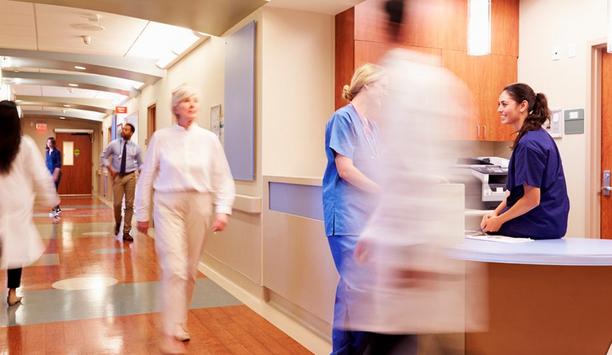
Creating a secure and positive healthcare experience
Download
11 advantages of a combined system for access control and intrusion
Download
5 steps to finding the right access control system for you
Download
Mobile Access - What you need to know
Download
School security checklist
Download
Assessing safety readiness for education campuses
Download
Creating a secure and positive healthcare experience
Download

Videos
Indoor Security: Manufacturers & Suppliers
- ASSA ABLOY Indoor Security
- Bosch Indoor Security
- Axis Communications Indoor Security
- Dahua Technology Indoor Security
- Honeywell Security Indoor Security
- Hikvision Indoor Security
- Vanderbilt Indoor Security
- Ajax Indoor Security
- AV Costar Indoor Security
- CyberLock Indoor Security
- Software House Indoor Security
- Visonic Indoor Security
- Avigilon Indoor Security
- OPTEX Indoor Security
- Senstar Indoor Security
- Climax Technology Indoor Security
- AMAG Indoor Security
- Verkada Indoor Security
- Pyronix Indoor Security
- VIVOTEK Indoor Security

Using artificial intelligence (AI) to automate physical security systems
Download
A modern guide to data loss prevention
Download
7 proven solutions for law enforcement key control and asset management
Download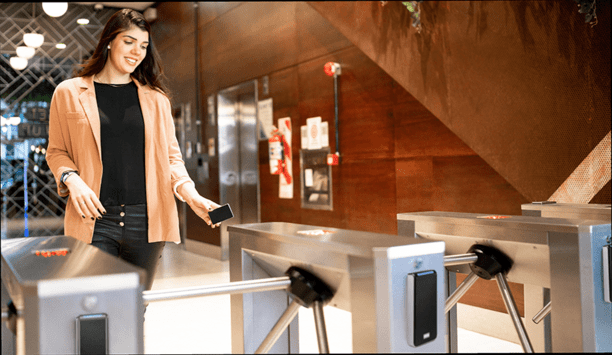
The truth behind 9 mobile access myths
Download
Access control system planning phase 2
Download








